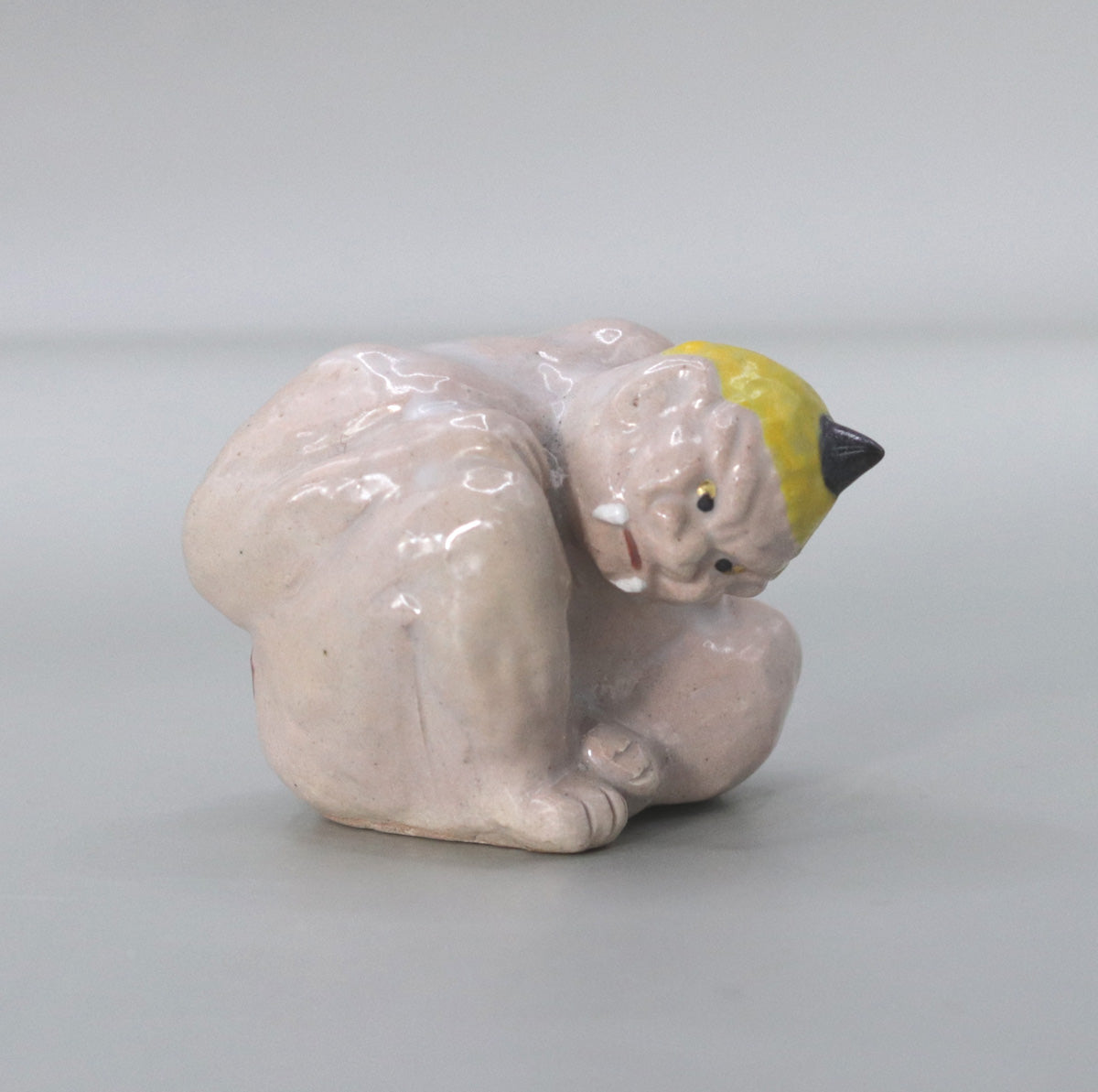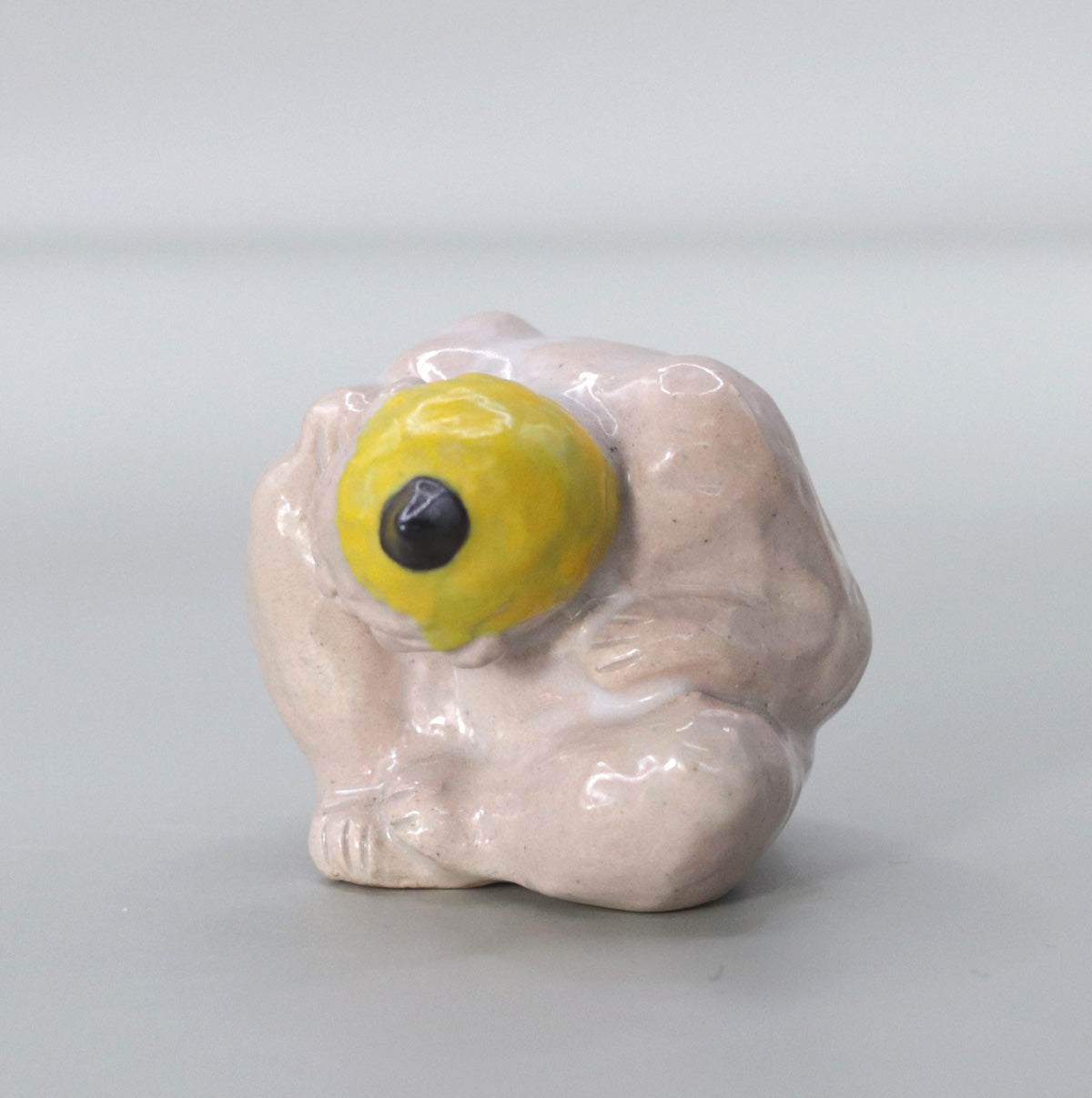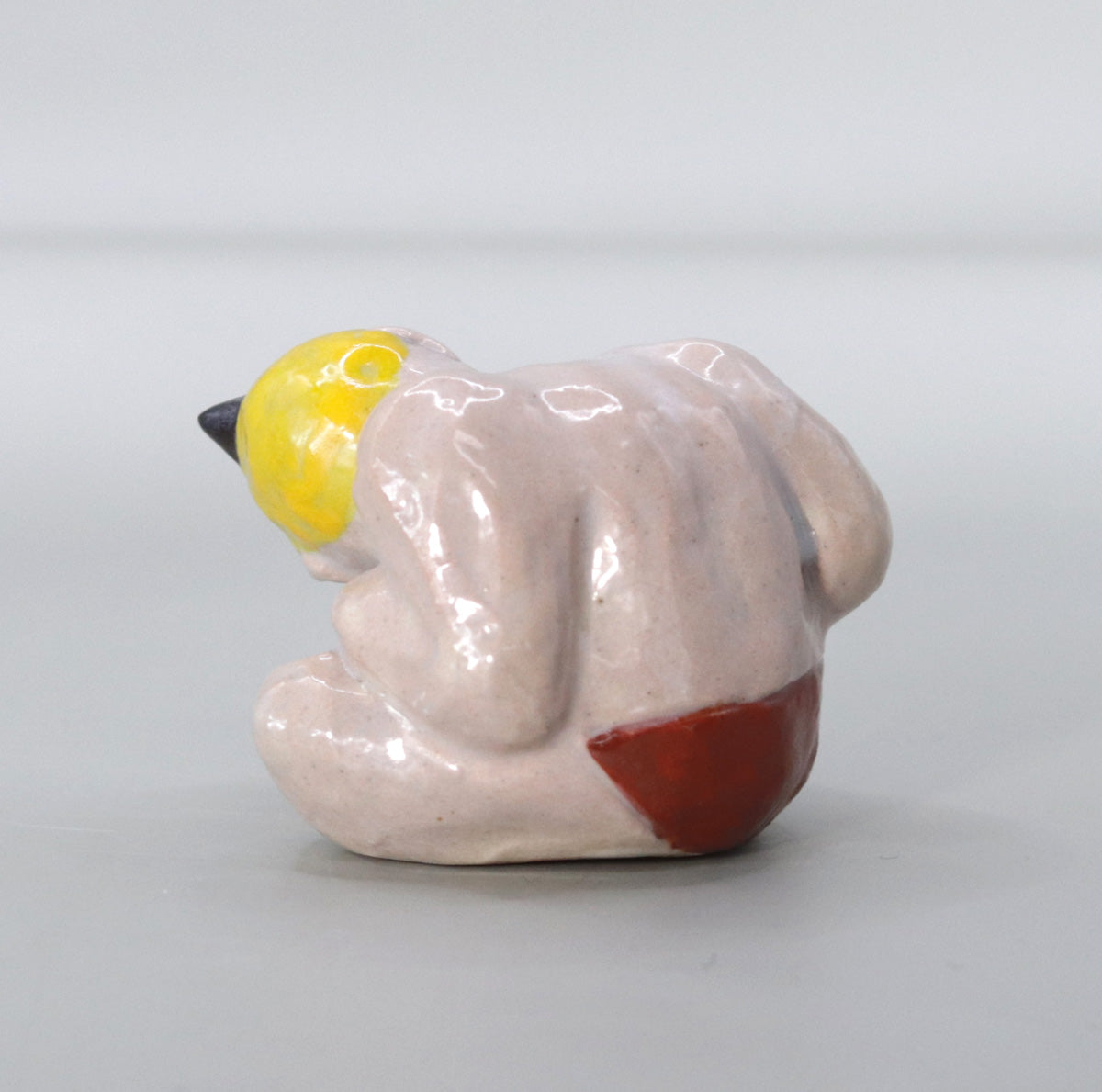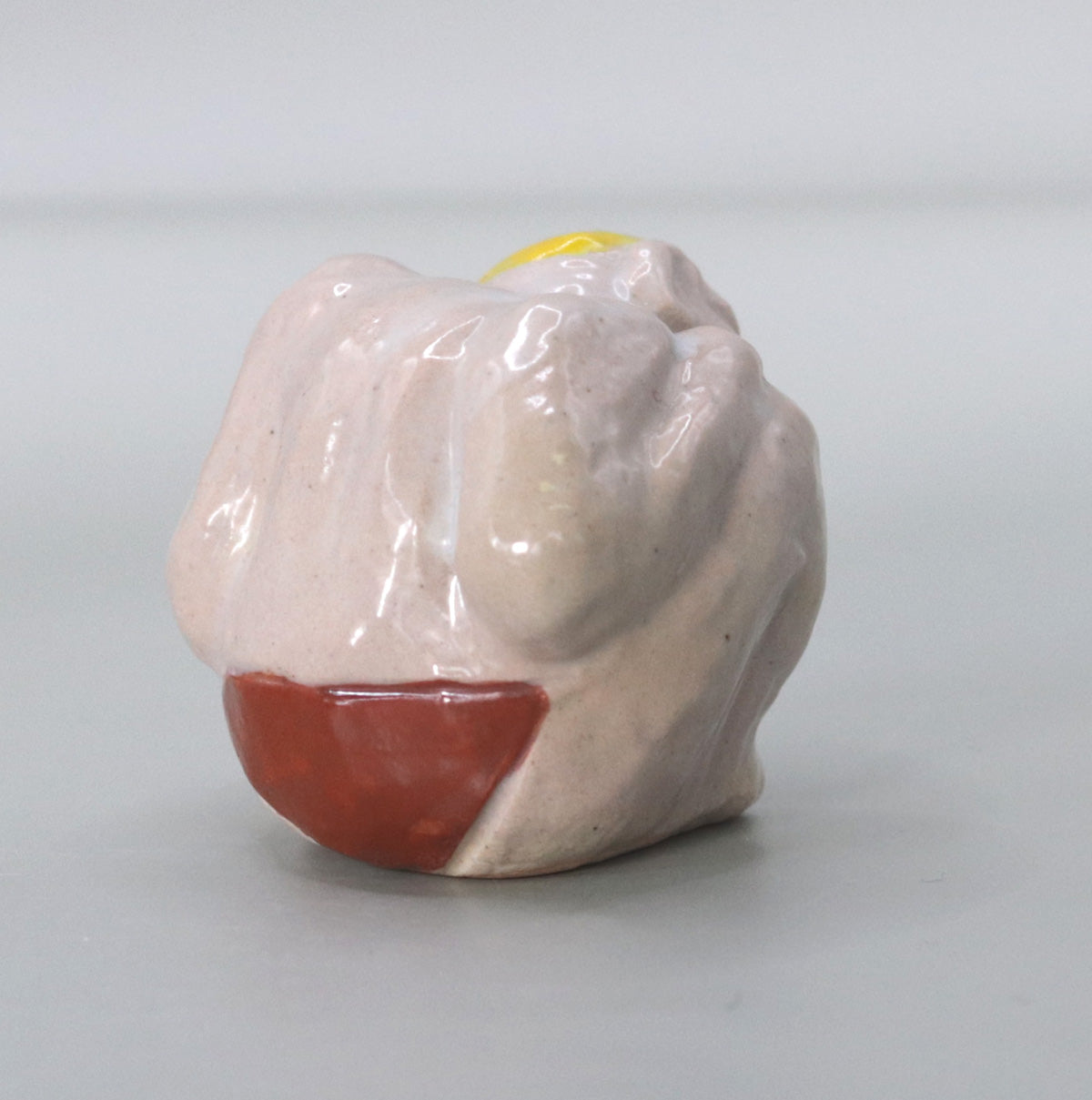Demonic Lid Placer by Rakusai Onishi
Demonic Lid Placer by Rakusai Onishi
Couldn't load pickup availability
Width: 6.8cm x 6.8cm Height: 5.0cm
"If you drop the ladle, the evil spirits will laugh at you." The joy of placing the ladle on the head of the evil spirits.
This evil spirit lid rest created by Onishi Rakusai is based on the evil spirit (Amanojaku) seen in Buddhist art, and is a fine piece that combines functionality as a tea ceremony tool with a sense of playfulness. The figure of the round, crouching demon is imbued with Onishi Rakusai's unique gentle sense of form and the skill of Kyoto ware color painting. Below, we will introduce the charm of this piece from five different perspectives.
1. Beauty of form and form
The charm of the curled-up pose <br data-end="234" data-start="231">The pose, with the whole body curled up as if hugging itself tightly, softens the image of mere "evil" and somehow gives off a lovable charm. The angled expression with the head tilted naturally draws the guest's gaze when the statue is placed as a lid rest.
Stable center of gravity design <br data-end="358" data-start="355">The lower part of the body is slightly wider and the center of gravity is low, resulting in a practical shape that is unlikely to tip over even when a ladle or kettle lid is placed on it.
2. The beauty of color and glaze
Pale peach glaze and lustrous overglaze <br data-end="464" data-start="461">The pale peach glaze that covers the entire piece takes on a soft luster after reduction firing, and faintly suggests the texture of a demon's skin.
The contrast between the yellow glaze on the head and the black horn <br data-end="538" data-start="535">The yellow hair and single black horn are a color scheme that is also found on the ancient "A-gata and Un-gata" onigawara tiles, and they act as an effective visual accent.
Detailed depictions of the eyes, fangs, and mouth <br data-end="618" data-start="615">The eyes are made with tiny dots of black glaze and gold leaf, while the fangs are made with thin, raised layers of chalk powder to accentuate the three-dimensional effect. The vermilion line around the mouth, which appears to have been drawn in a single stroke, completes the demon's humorous expression.
3. Techniques: Hand-formed shaping and low-temperature overglaze painting
One-piece hand-twisted molding <br data-end="742" data-start="739">This technique involves pushing out a lump of clay with your fingertips to form the entire piece in one go, and the finger marks left on the surface give it a rich, fleshy appearance.
Pale peach veneer under a transparent glaze <br data-end="820" data-start="817">The two-layer structure, with a white veneer applied to the base and then a transparent glaze applied on top, creates an elegant texture with a faint cherry blossom hue shining through the gloss.
Color fixation by overglaze firing <br data-end="904" data-start="901">After painting, the hair, horns, eyes and fangs are fired at a low temperature of 750-800°C to ensure the freshness and durability of the colors.
4. Functionality and presentation at tea ceremonies
Practical use as a lid rest <br data-end="1001" data-start="998">The rounded back gently holds the contact point of the lid and also provides a non-slip effect. When placing the kettle lid on the pot, the demon's back is used to extinguish the fire, creating the effect of "subduing demons."
Conversational Topics <br data-end="1090" data-start="1087">In temple architecture, evil spirits are often depicted as beings supporting Buddhist statues and pagodas, and are symbols of good fortune that have turned into "supporters of Buddhism." The host can add this anecdote to enjoy Zen-filled conversation with his guests.
Suitable for seasons and events <br data-end="1201" data-start="1198">It is perfect for more elaborate occasions such as tea ceremonies for praying for protection from misfortune, on Setsubun or New Year's Eve, or on rainy days or when having late-night talks.
5. Cultural and symbolic significance
Although evil spirits are originally metaphors for worldly desires and disasters, in the Buddhist world they are subdued by the power of the Buddha and are reborn as pedestals that support temples and shrines.
The force of the fire (steam) = calming down worldly desires on the demon's back = subjugation
This symbolic gesture resonates with the spirit of the tea ceremony, which is to "calm the mind in the midst of everyday life." Onishi Rakusai has encapsulated this profound meaning in a humorous design, elevating it into a tool that blends naturally into the modern tea ceremony.
The figure of a small demon bending over to support a kettle lid is humorous, but it also contains a prayer for protection from evil and peace. If you place it at a tea ceremony, your guests will smile and think about the demon's teaching that "earthly desires are enlightenment." Onishi Rakusai's demon lid rest is a masterpiece that is both practical and artistic, fulfilling both the ideals of wabi and playfulness.
Share

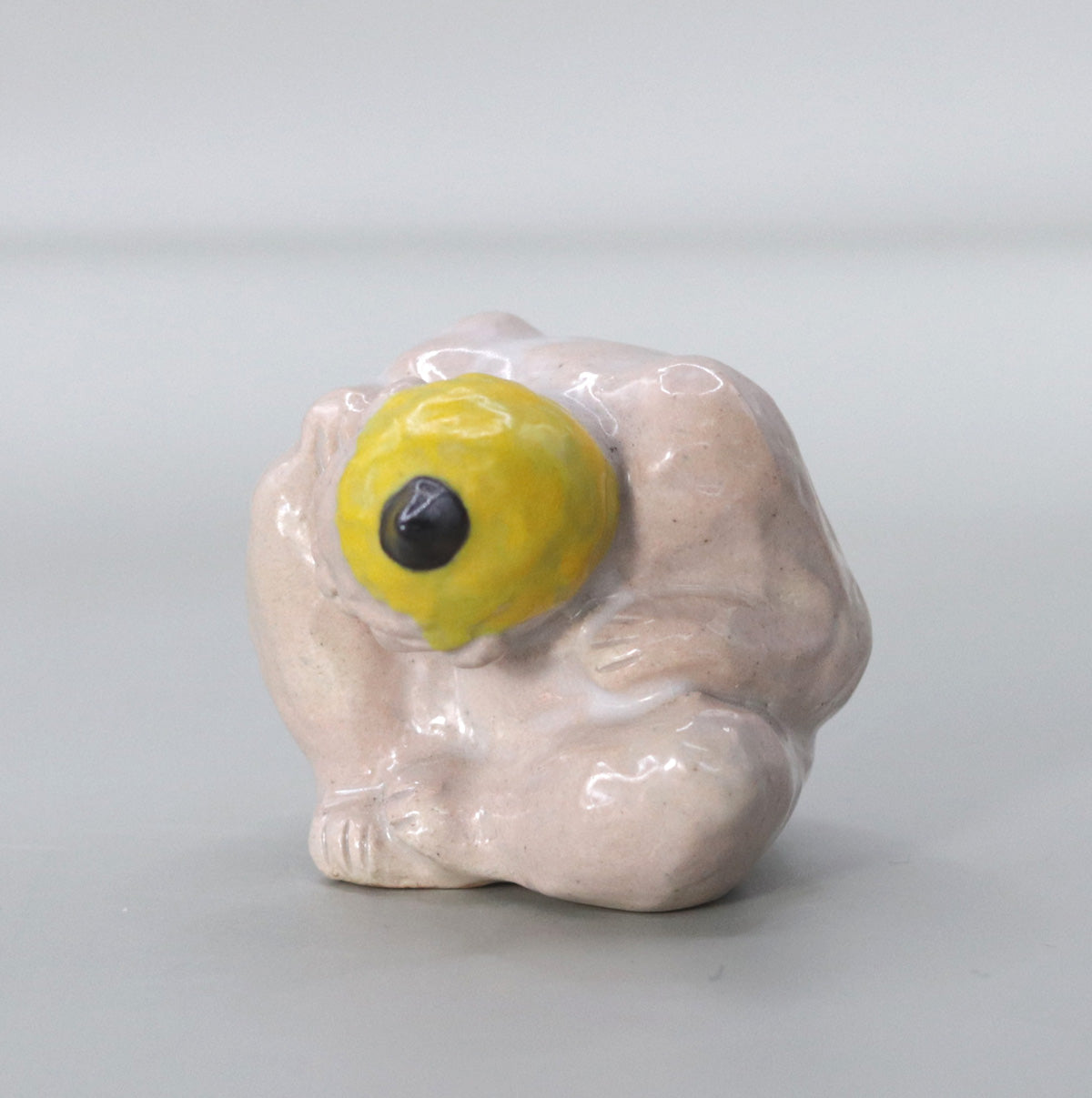
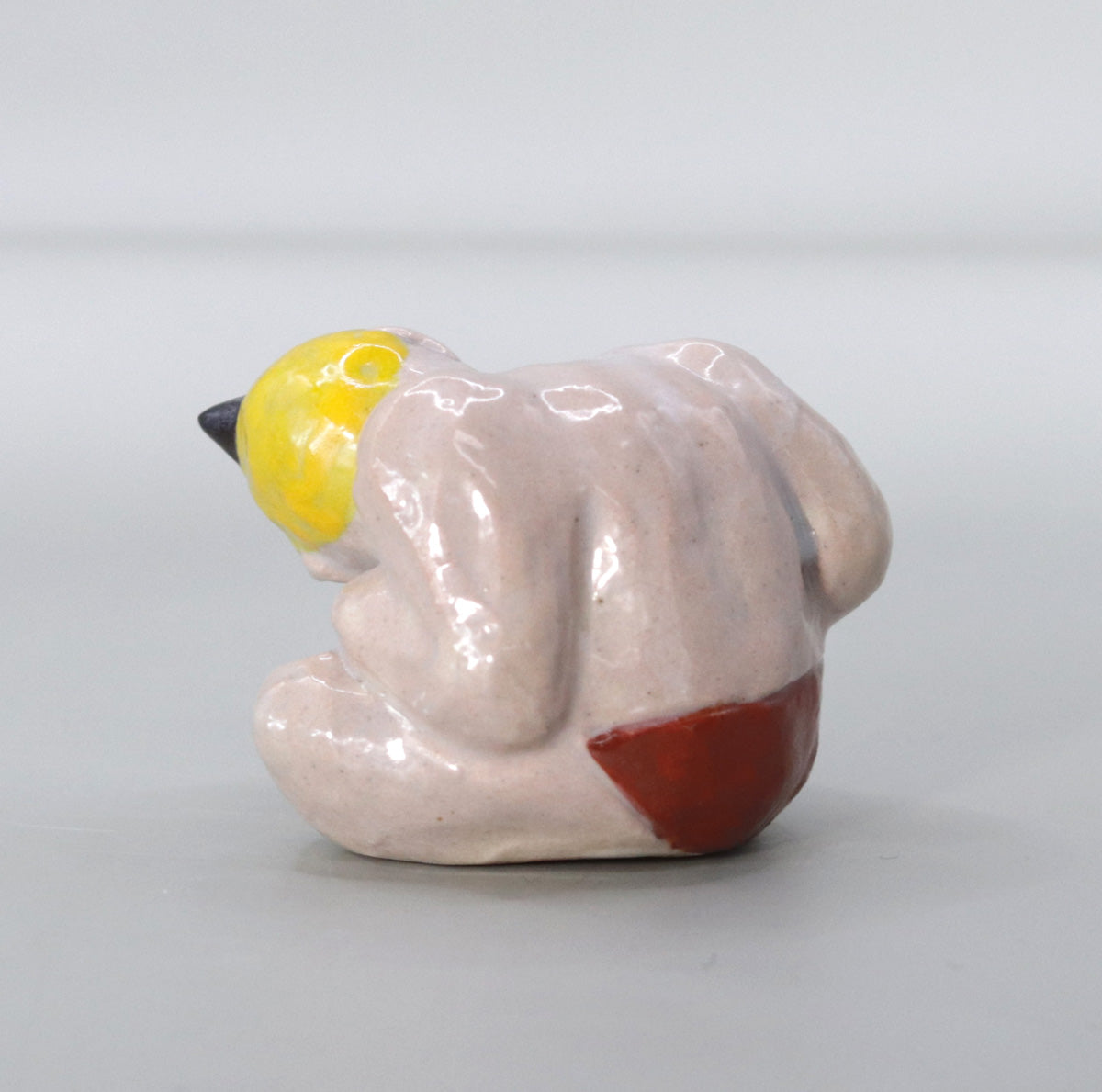
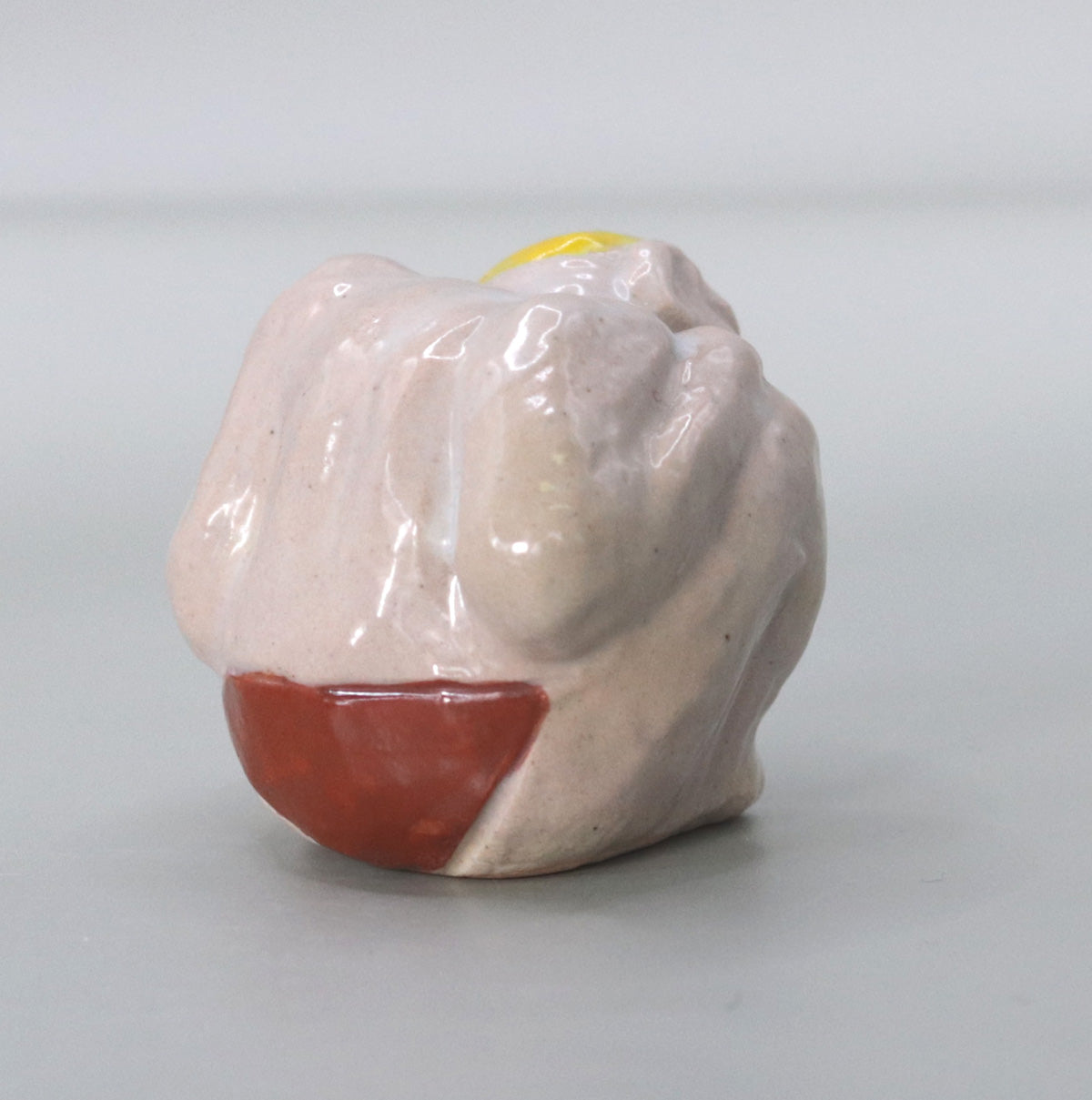
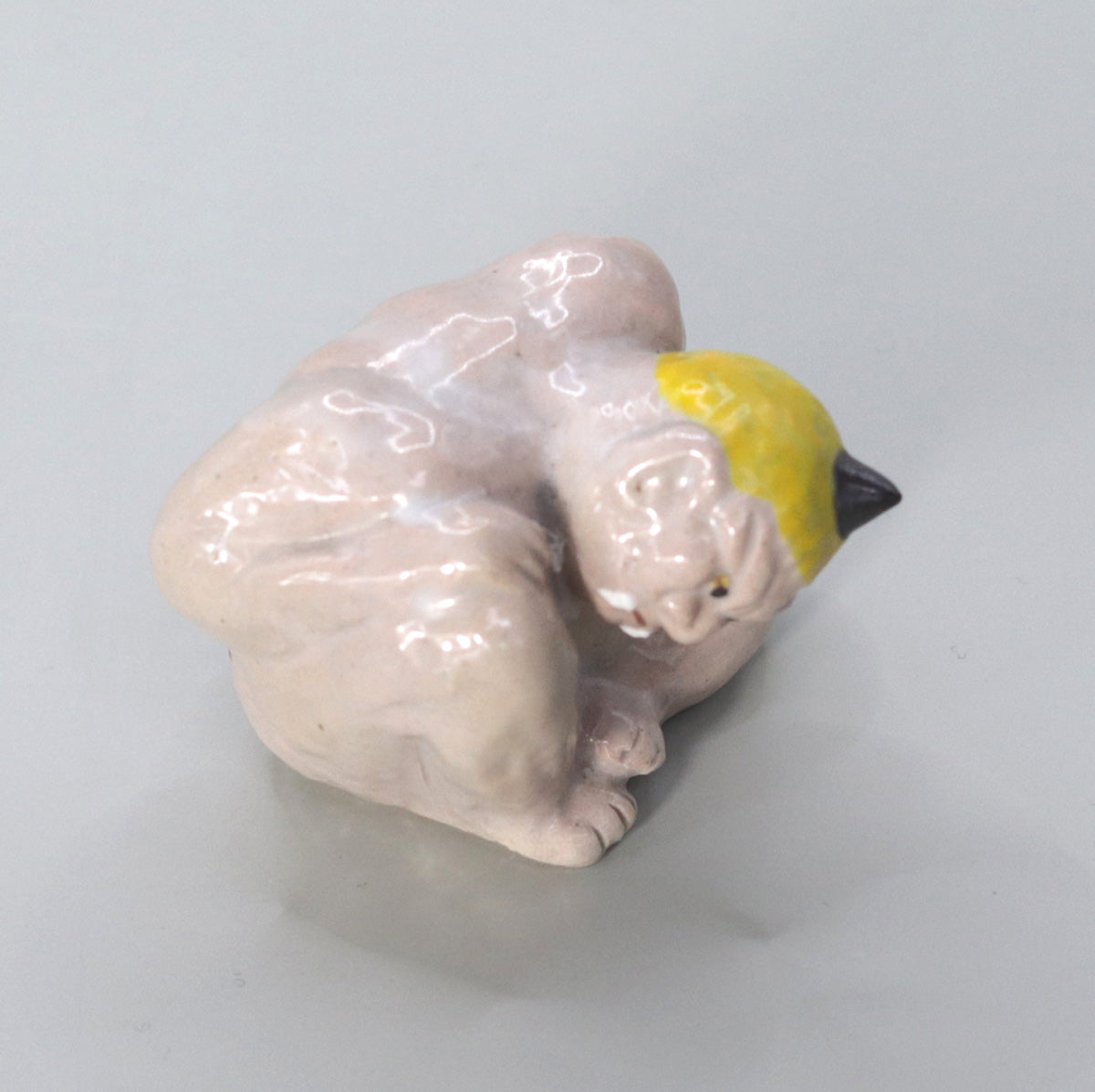
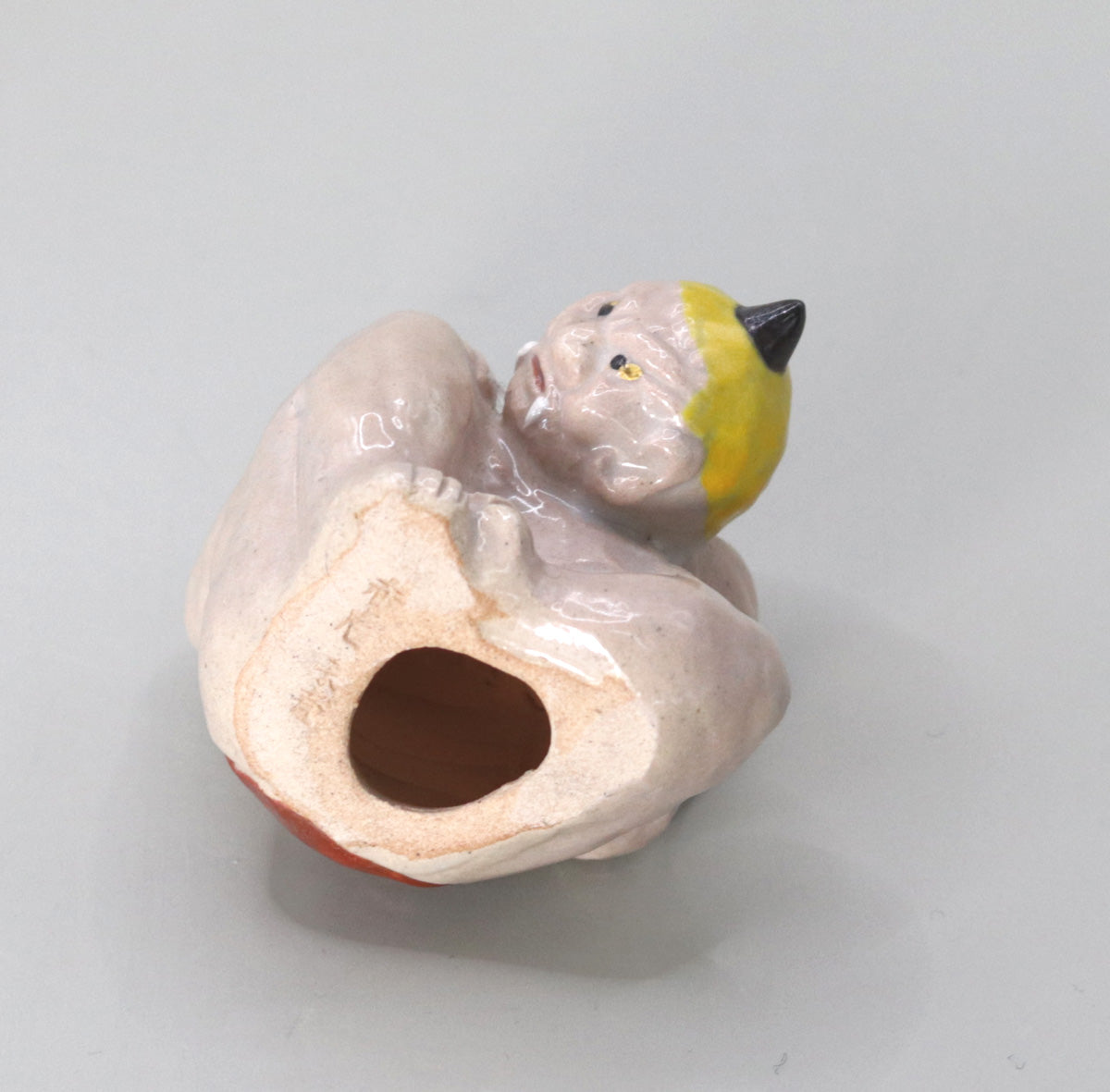
Multi-Column
-
[I will send it to you quickly and carefully]
We carefully package each product in a way that suits it best.
Also, delivery times vary depending on the piece (vessel, etc.).
Items that already come with a box will be shipped within 1-3 days of the order date.
For items that require a box to be made after your order, it will take approximately 30 days for production to be completed and then shipped.
In either case, once we have confirmed your order, we will contact you by email to inform you of the delivery date.
-
[Requests when purchasing pottery]
Even products that look the same may differ slightly in color, shape, size, etc.
The way the glaze is used, the power of the kiln, the firing method, the season, and the humidity also affect the appearance of the pottery.
Please understand the individuality of each piece of pottery and enjoy the unique warmth of handmade.

